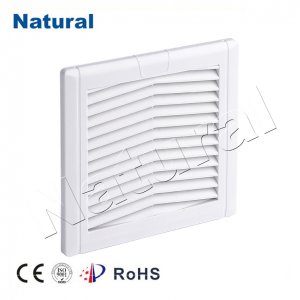In the ever-evolving landscape of technological advancements, there exists a piece of equipment that often goes unnoticed but plays a vital role in maintaining the efficiency and longevity of various electronic systems. This unsung hero is none other than the filter fan. Despite its unassuming appearance, the filter fan serves a crucial purpose in safeguarding electronic equipment from overheating and the intrusion of harmful particles. In this article, we will delve into the ingenious design and functionality of filter fans, shedding light on their significance in the modern world.

Guardians of Temperature Regulation Electronic devices generate heat as they operate, and if not properly managed, this heat can lead to system failures and reduced lifespan. This is where filter fans come into play. Filter fans are cleverly designed devices that facilitate the exchange of air within an enclosure, dissipating excess heat and maintaining an optimal temperature for the internal components. The mechanism involves drawing in cooler external air while expelling the heated air from within the enclosure. The presence of a filter prevents dust, dirt, and other particles from entering the enclosure, ensuring that the internal components remain clean and functional. The Dance of Engineering and Efficiency Behind the seemingly simple operation of a filter fan lies a complex engineering marvel. The fan’s housing is meticulously designed to create a proper seal with the enclosure, preventing air leakage and maintaining a controlled airflow pattern. The integration of fan blades with precision-crafted motor systems enables efficient air movement while minimizing noise production. As an added benefit, some advanced filter fans employ variable speed controls that adjust fan speed according to temperature fluctuations, enhancing energy efficiency and prolonging the life of the fan. Defenders Against Contaminants In environments laden with dust, dirt, and other contaminants, electronic systems face a constant threat. Filter fans act as staunch defenders by incorporating filtration mediums that trap airborne particles before they can infiltrate the enclosure. This preventive measure not only ensures the cleanliness of internal components but also contributes to the overall reliability of the system. Regular maintenance involves replacing or cleaning the filter media, thus maintaining the effectiveness of the filter fan over time. Applications Across Industries The versatility of filter fans is highlighted by their widespread use across various industries. From information technology to manufacturing and even agriculture, filter fans find their place in different contexts. Data centers rely on filter fans to maintain the optimal operating temperature of servers, while manufacturing facilities utilize them to protect sensitive equipment from contaminants in industrial environments. In the agricultural sector, filter fans contribute to preserving the functionality of automated systems that monitor and control processes in greenhouses and livestock facilities. Looking Ahead As technology continues to evolve, so too will the capabilities of filter fans. The integration of smart sensors and connectivity features enables remote monitoring and control, allowing for predictive maintenance and enhanced system management. Furthermore, ongoing advancements in materials science contribute to the development of more efficient and durable filter media, ensuring that filter fans remain at the forefront of environmental protection in electronic systems. In conclusion, while filter fans might not capture the spotlight in the realm of technological innovations, their significance cannot be overstated. These unassuming devices play a vital role in maintaining the efficiency, reliability, and longevity of electronic systems by regulating temperature and guarding against contaminants. As we march towards a future of ever-advancing technology, let us not forget the humble filter fan – a silent guardian of our electronic world.